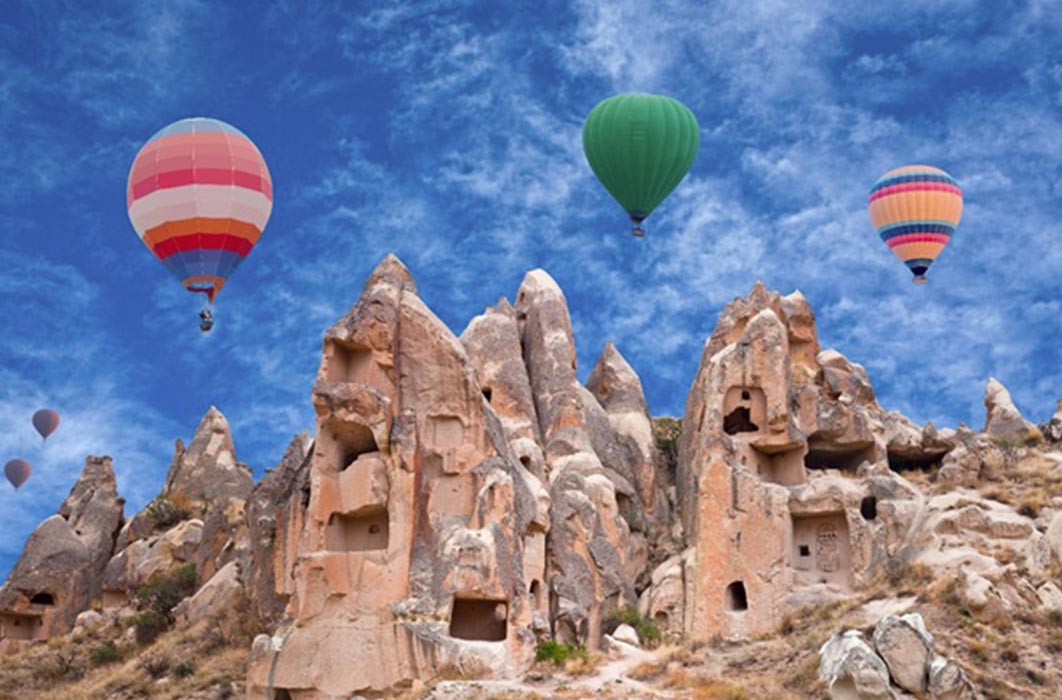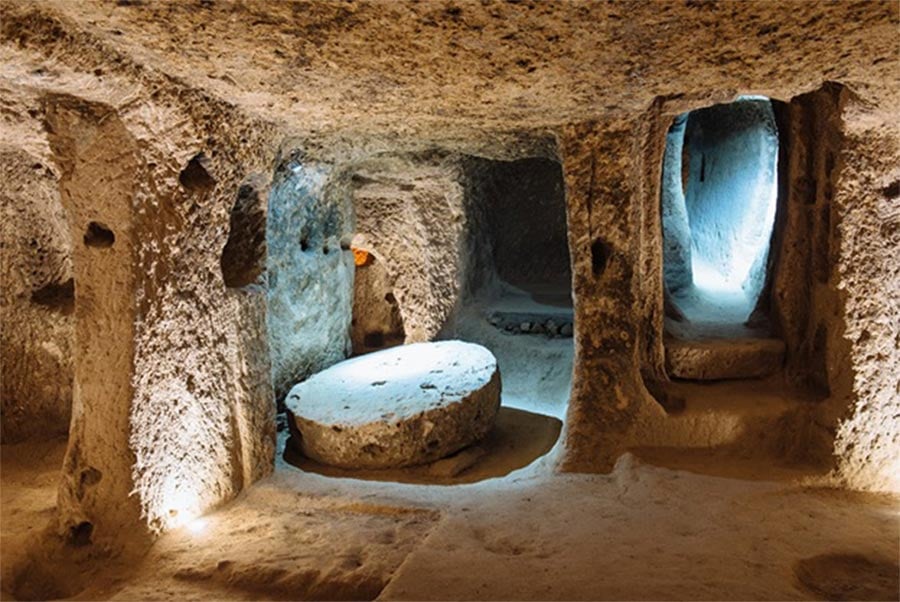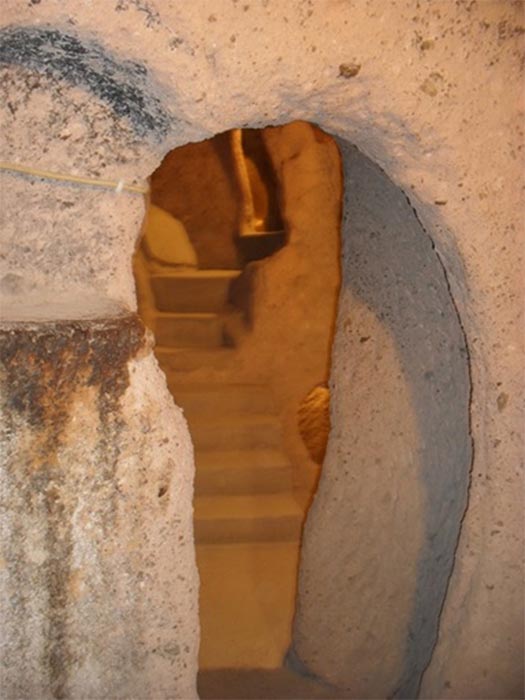
Who Built This City? Underground Derinkuyu, and the Rock Churches of Göreme
Could the underground cities in Cappadocia, Turkey date back to 12,800 years ago? In 1963, so the story goes, a man living in Cappadocia excavated some large stones from his basement while renovating his house. Behind them he found an ancient tunnel that led to more tunnels, and then more tunnels, and more after that. When he reported his find and the experts descended, what they discovered was a complex underground city that once was home to some 20,000 people, their livestock, wine and oil presses, storage cellars, and chapels. A large 180-foot (54 meters) ventilation shaft insured fresh air.

Derinkuyu underground city in Cappadocia, Turkey (ninelutsk/Adobe Stock)
There is evidence that suggests the city, long after its construction, might have later been used by Christians who built a religious school and a church. They named the complex after the city that had been built over it on the surface, Derinkuyu. After more exploration it was discovered that Derinkuyu is only one of several more such underground cities, spread out over Cappadocia in Turkey. Who built them? And why? And when?

Interior of underground city in Cappadocia, Turkey ( byheaven/ Adobe Stock)
Subterranean Civilizations
It seems as though Cappadocia, in central Turkey, was home to an entire underground civilization. A few years ago, the Hurriyet Daily News announced the “biggest archeological finding of 2014” when another ancient city near Kayseri was discovered beneath the Nevşehir fortress, expanding out into the surrounding countryside. At least 3.5 miles (seven kilometers) of tunnels and chambers hide churches, escape galleries, and dwelling places that were constructed at least 5,000 years ago and perhaps much longer.
Nevşehir province was already famous as the home of Derinkuyu. Now it appears that the whole area may have been home to a thriving underground community, much of which is still to be discovered. Archaeologists are calling it the largest underground civilization in the world. To think that it was first built at least during the time of the traditional dates given for construction of the Giza pyramids, and possibly much earlier, is almost mind boggling. How did they ever do it? More than 200 underground villages contain secret passages, rooms, ancient temples, and storage facilities. There were full-blown kitchens and wineries, along with presses for producing lamp oil for lighting. Grindstones and ceramics from the Byzantine era through the Ottoman conquest indicate a long-standing culture. The presence of livestock speaks of occupation that lasted for many generations.
People lived their lives and died in these caverns. No one knows why. But that may not even be the most intriguing question. The underground caves of Cappadocia weren't discovered until 2014. What else yet remains to be found?





